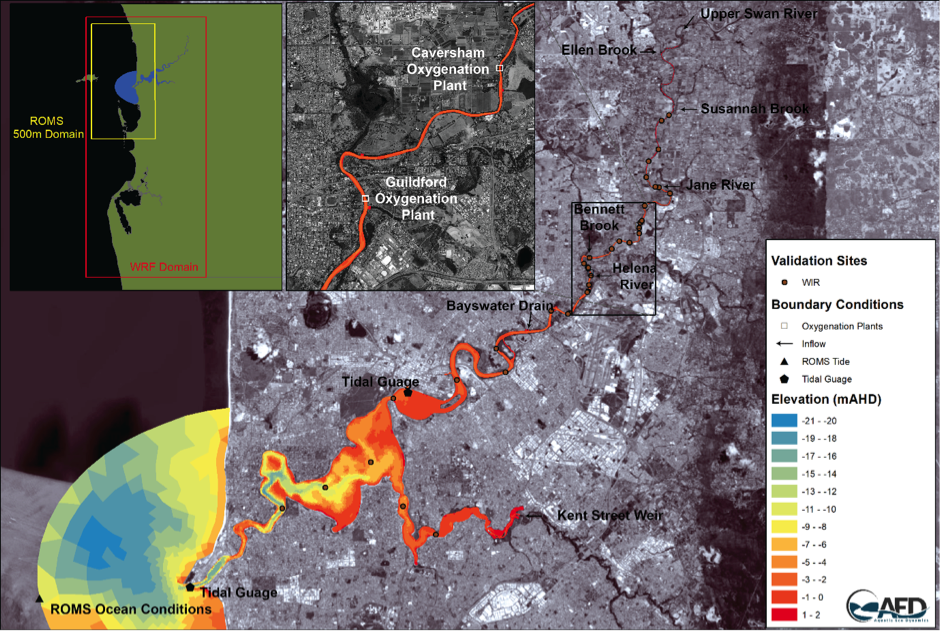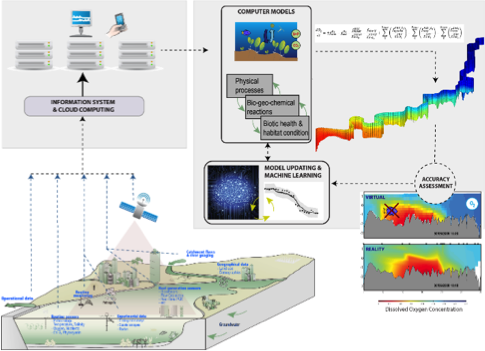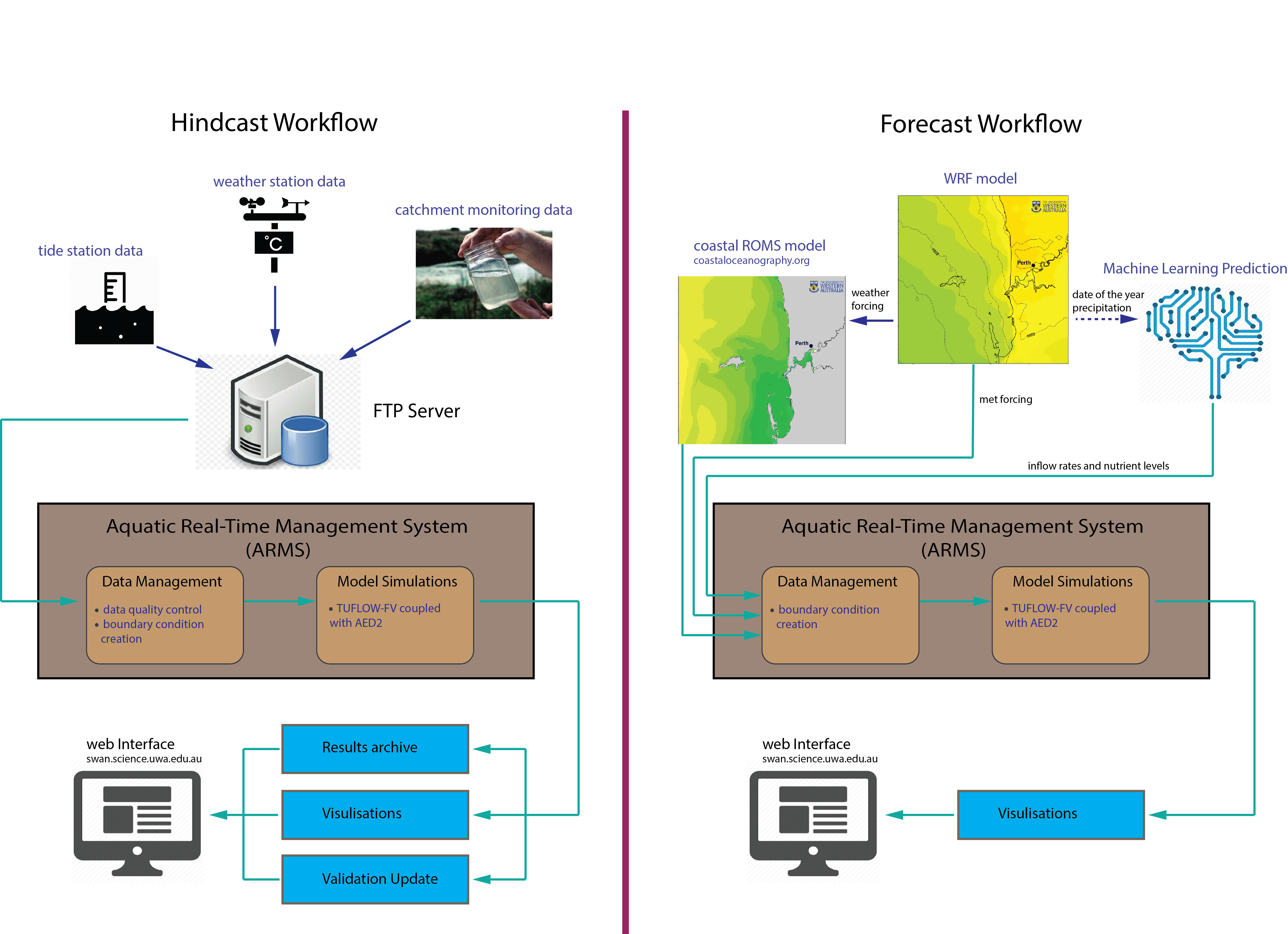Overview / Background
The Swan-Canning estuary
The Swan-Canning Estuary is a tunnel-type salt-wedge urban estuary, flowing through the capital city of Western Australia – Perth. It is a micro-tidal (< 1 m) estuary receiving ocean flushing from the Indian Ocean and fresh runoff from the Avon and Swan Coastal Catchments, which is the largest river catchment in the south-west of Western Australia with a total area of approximately 120,000 km2.
The estuary is a productive ecosystem that plays an important role in the local water balance, biogeochemical cycles and also supporting biodiversity. Like many other urban estuaries around the worldwide, the estuary is being exposed to an increasingly complex suite of climatic and anthropogenic perturbations that alter their hydrology, chemistry and ecological integrity. Human activity has greatly accelerated nutrient loading to coastal ecosystems over the past decades, causing widespread eutrophication that remains a persistent management challenge with detrimental effects on biodiversity and the overall amenity and health of coastal waters. It is also under stress of a drying climate that has dramatically impacts on the hydrology and ecology.
Why a real-time water quality system for Swan-Canning estuary?
The need to effectively balance ecological objectives and the services they provide, whilst simultaneously capitalising on development opportunities to support economic and societal growth frequently involve a diverse range of stakeholder opinions and may present ‘wicked problems’. With this in mind, estuary modelling and real-time systems have a unique role to play in assisting managers of estuary condition and health, when compared to other ocean real-time systems.
Accurate observations and future predictions of events and impacts in the short and long term are indispensable for successful sustainable coastal management. Integrated model-observing systems can be particularly useful when dealing with extreme short-term events by providing predictions of estuary states and assisting remediation strategies, but the needs of an estuary water quality system also relate to supporting long-term and complex planning decisions, climate change scenarios, and restoration measures.
Approach to prediction
A systematic approach linking ocean, land, atmosphere and the estuary is required to understand the way the Swan-Canning Estuary works and to predict the consequences of human activities and natural change. The system is managed under the Aquatic Real-Time Management System (ARMS) that is responsible for automatically downloading and processing external data as model inputs, executing the estuary model in hind-cast and fore-cast modes, and generating modelling output to the web server.
The integrated modelling system has two modes that serve for difference management purposes: (1) hind-cast mode that runs when all forcing data are readily available and processed by ARMS; this mode serves for general water quality observation; (2) forecast mode that runs daily and serves for urgent response and ecological risk predictions. Both the modes include SCERM model as the core module and under management of ARMS, but they have different workflows and model outputs: the hind-cast mode is forced with mornitored conditions of catchment, ocean and weather inputs, while the forecast mode is modelled by intergration of the TUFLOW-AED model with weather model WRF, coastal model ROMS, and a machine-learning method to effetively predict the estuary conditions in future 5 days. The results are displayed here in this web portal to provide visualization of the model output and contains a wide range of pre-processed model output via the Model Dashboard.



